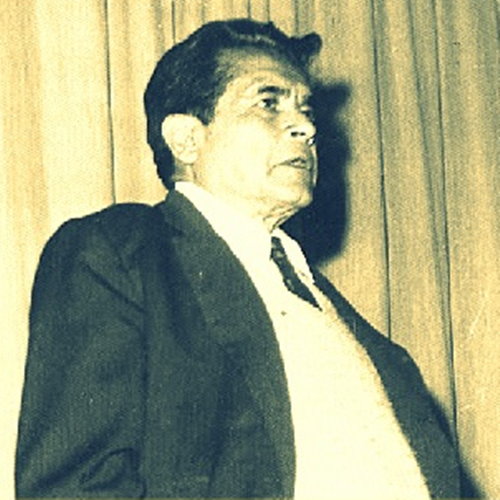En este artículo vamos a presentar rasgos biográficos en inglés de algunos escritores peruanos (Peruvian writers) que pueden ser trabajados en una sesión de aprendizaje del área de inglés en el nivel secundaria con el fin de practicar el pasado simple, a manera de conocer un poco más sobre los representantes de la literatura peruana.
| Peruvian Writers (Escritores peruanos) | ||||||||||||||||||||||||||||||||||||||||||||||||||
1.- Cesar Vallejo: |
||||||||||||||||||||||||||||||||||||||||||||||||||
| Life Details: | Biography: | |||||||||||||||||||||||||||||||||||||||||||||||||
|
Cesar Abraham Vallejo Mendoza was born in Santiago de chuco, La Libertad, on March 16th, 1892. He died in Paris, France, on April 15th, 1938. The clinic records state that he died of an “acute intestinal infection”. He was a journalist, teacher, poet and writer. He was considered one of the great poetic innovators of the 20th century. His parents were Francisco De Paula Vallejo Benítez and María de los Santos Mendoza Gurrionero. He was the youngest of eleven children. He married Georgette Marie Philippant, a French girl, in 1934, but he did not have any children. He studied elementary school at 271 School in Santiago de Chuco and high school at San Nicolás National School in Huamachuco. In 1910 he started studying Literature at National University of Trujillo, but the lack of money forced him to leave his studies for a time. Then, he went back to his Literature studies and studied Law at the same time at National University of Trujillo. In 1915 he got a Bachelor's degree in Literature and continued studying Law until 1917. However, his life in Trujillo became complicated by a tortured love affair so he traveled to Lima where, in order to get his doctorate in Literature and Law he continued his studies at Nacional University of San Marcos. In 1920 Vallejo returned to his birthplace where he became involved in a political insurrection during which the town's general store burned down. He was accused of instigating the conflict and was jailed for nearly three months. Added to the death of his mother, the isolation and savagery of jail conditions affected him deeply the rest of his life. He wrote in prose and verse and his favorite genre was the poetry. He wrote about the human pain and suffering. His first work was The Black Heralds which was published in 1918. His most famous works are The Black Heralds, Human poems, Trilce, El Tungsteno and Paco Yunque. |
|||||||||||||||||||||||||||||||||||||||||||||||||
2.- José Carlos Mariátegui: |
||||||||||||||||||||||||||||||||||||||||||||||||||
|
||||||||||||||||||||||||||||||||||||||||||||||||||
3.- Ciro Alegría: |
||||||||||||||||||||||||||||||||||||||||||||||||||
|
||||||||||||||||||||||||||||||||||||||||||||||||||
4.- Francisco Izquierdo Ríos: |
||||||||||||||||||||||||||||||||||||||||||||||||||
|
||||||||||||||||||||||||||||||||||||||||||||||||||
5.- José María Arguedas: |
||||||||||||||||||||||||||||||||||||||||||||||||||
|
||||||||||||||||||||||||||||||||||||||||||||||||||
Referencias Bibliográficas:
http://en.wikipedia.org/wiki/C%C3%A9sar_Vallejo
http://es.wikipedia.org/wiki/C%C3%A9sar_Vallejo
http://www.poemhunter.com/cesar-vallejo/biography/
http://www.poets.org/poetsorg/poet/c%C3%A9sar-vallejo
http://www.modernismo98y14.com/vallejo-cesar.html
http://www.los-poetas.com/b/biovalle.htm
http://es.wikipedia.org/wiki/Jos%C3%A9_Carlos_Mari%C3%A1tegui
http://www.resumendehistoria.com/2008/11/biografia-de-jose-carlos-mariategui.html
http://wiki.sumaqperu.com/es/Jos%C3%A9_Carlos_Mari%C3%A1tegui
http://www.adonde.com/historia/1930_mariategui.htm
http://es.wikipedia.org/wiki/Ciro_Alegr%C3%ADa
http://www.diarioinca.com/2012/02/biografia-de-ciro-alegria-bazan.html
http://www.enotes.com/topics/ciro-alegria
http://www.britannica.com/EBchecked/topic/13703/Ciro-Alegria
http://www.enotes.com/topics/ciro-alegria
http://www.kirjasto.sci.fi/calegria.htm
http://books.google.com.pe/books?id=ay3OEHLRbqQC&pg=PR15&lpg=PR15&dq=Indigenista+Literature+movement+of+Peru.&source=bl&ots=QJms3gxEiJ&sig=J29kz0DUzk2rr8WBn8tWSGHg5PQ&hl=en&sa=X&ei=PN43VKGnKYX4yQSl5oHYAw&redir_esc=y#v=onepage&q=Indigenista%20Literature%20movement%20of%20Peru.&f=false
http://www.buscabiografias.com/bios/biografia/verDetalle/3109/Ciro%20Alegria
http://saposoaenlanoticia.blogspot.com/2012/06/por-alfredo-rios-guzman.html
http://en.wikipedia.org/wiki/Peruvian_literature
http://en.wikipedia.org/wiki/Jos%C3%A9_Mar%C3%ADa_Arguedas
http://es.wikipedia.org/wiki/Jos%C3%A9_Mar%C3%ADa_Arguedas
http://es.wikipedia.org/wiki/Indigenismo
http://es.wikipedia.org/wiki/C%C3%A9sar_Vallejo
http://www.poemhunter.com/cesar-vallejo/biography/
http://www.poets.org/poetsorg/poet/c%C3%A9sar-vallejo
http://www.modernismo98y14.com/vallejo-cesar.html
http://www.los-poetas.com/b/biovalle.htm
http://es.wikipedia.org/wiki/Jos%C3%A9_Carlos_Mari%C3%A1tegui
http://www.resumendehistoria.com/2008/11/biografia-de-jose-carlos-mariategui.html
http://wiki.sumaqperu.com/es/Jos%C3%A9_Carlos_Mari%C3%A1tegui
http://www.adonde.com/historia/1930_mariategui.htm
http://es.wikipedia.org/wiki/Ciro_Alegr%C3%ADa
http://www.diarioinca.com/2012/02/biografia-de-ciro-alegria-bazan.html
http://www.enotes.com/topics/ciro-alegria
http://www.britannica.com/EBchecked/topic/13703/Ciro-Alegria
http://www.enotes.com/topics/ciro-alegria
http://www.kirjasto.sci.fi/calegria.htm
http://books.google.com.pe/books?id=ay3OEHLRbqQC&pg=PR15&lpg=PR15&dq=Indigenista+Literature+movement+of+Peru.&source=bl&ots=QJms3gxEiJ&sig=J29kz0DUzk2rr8WBn8tWSGHg5PQ&hl=en&sa=X&ei=PN43VKGnKYX4yQSl5oHYAw&redir_esc=y#v=onepage&q=Indigenista%20Literature%20movement%20of%20Peru.&f=false
http://www.buscabiografias.com/bios/biografia/verDetalle/3109/Ciro%20Alegria
http://saposoaenlanoticia.blogspot.com/2012/06/por-alfredo-rios-guzman.html
http://en.wikipedia.org/wiki/Peruvian_literature
http://en.wikipedia.org/wiki/Jos%C3%A9_Mar%C3%ADa_Arguedas
http://es.wikipedia.org/wiki/Jos%C3%A9_Mar%C3%ADa_Arguedas
http://es.wikipedia.org/wiki/Indigenismo
Nota: Las imágenes han sido tomadas de la prodigiosa gama de google imágenes, algunas de las cuales fueron ligeramente editadas por nuestra parte. Desde aquí agradecemos infinitamente y respetamos la propiedad intelectual de los autores de estos valiosos materiales que han sido de gran aporte para esta publicación.









